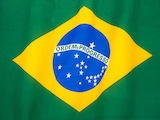Brazil Signals to No Shift Ahead in Monetary Policy After Cutting the Rate to 11%
Post Views 0Brazil’s central bank signaled that it would keep cutting interest rates at its current half-point pace as it tries to prevent Europe’s debt crisis from spreading from the stunting growth in Latin America’s biggest economy.
On Tuesday, the bank’s board, that was led by President Alexandre Tombini, voted unanimously to reduce the benchmark rate 50 basis points for a third straight meeting, to 11 percent, matching the forecast by 64 of 65 analysts that were surveyed by Bloomberg.
Policy makers, in a statement almost exactly identical to the one from their previous meeting, said that ”moderate” rate cuts can mitigate the effects of the worsening global economy without putting at risk its 2012 inflation target. Tombini’s commitment to the current pace of rate cuts may lead traders to pare bets on bigger reductions to come, said Jankiel Santos, who is the chief economist at Espirito Santo Investment Bank.
”They are really comfortable with the pace they have adopted so far, and with the strategy of being conservative in response to these international jitters,” Santos said in a phone interview from Sao Paulo.
Tombini was among the first of the policy makers to react as Europe’s crisis deepened. The country’s surprise interest rate cut in August, the first in more than two years, has since then been followed by Australia, Israel and the European Central Bank. According to Bloomberg forecasts based on interest rate futures contracts, the traders are betting Tombini will cut the Selic rate as low as 9.25 percent by the month of July.
The deterioration of the world economy is in line with policy makers’ forecasts, so they do not see a need to step up the pace of rate cuts, said Gray Newman, who is Morgan Stanley’s chief Latin America economist.
”When the central bank first embarked on rate cuts they were already expected a pretty difficult global scenario,” said Newman, speaking by the phone from New York.
More than $3 trillion was wiped off world stock markets last month, as the yields on Italian and Spanish sovereign debt rose to Euro-era highs, and a failed German bond auction signaled that the debt crisis has spread to core European nations.
In November, the real weakened 5.1 percent, the most of seven major Latin American currencies tracked by Bloomberg. The yield on the interest rate futures contract maturing in January of 2013 fell 66 basis points, or 0.66 percentage points last month to 9.63 percent. Since the end of July, the yield has fallen more than 3 percentage points.
Annual inflation in Brazil slowed for a second straight month in mid-November, to 6.69 percent. Last week, Tombini said that inflation rates will ”fall sharply” by the second quarter of next year. The inflation has been above the 6.5 percent upper limit of its target rage since April.
Breakeven rates, the difference between yields on 2015 inflation-linked and fixed rate bonds, show that traders are wagering on average annual inflation of almost 5.6 percent over the next four years, down from 6.2 percent at the end of September. The inflation has exceeded the 6.5 percent upper limit of the of the central bank’s target since April.
Brazil Signals to No Shift Ahead in Monetary Policy After Cutting the Rate to 11% by Harrison Barnes



 2006-2015 Median Weekly Earnings of Full-Time Workers in the United States
2006-2015 Median Weekly Earnings of Full-Time Workers in the United States  November Posts Another Strong Job Report
November Posts Another Strong Job Report  US Dollar Gaining Momentum
US Dollar Gaining Momentum  Expected Changes in 2016 to the Workplace
Expected Changes in 2016 to the Workplace  Chicago’s Top Tech Companies
Chicago’s Top Tech Companies